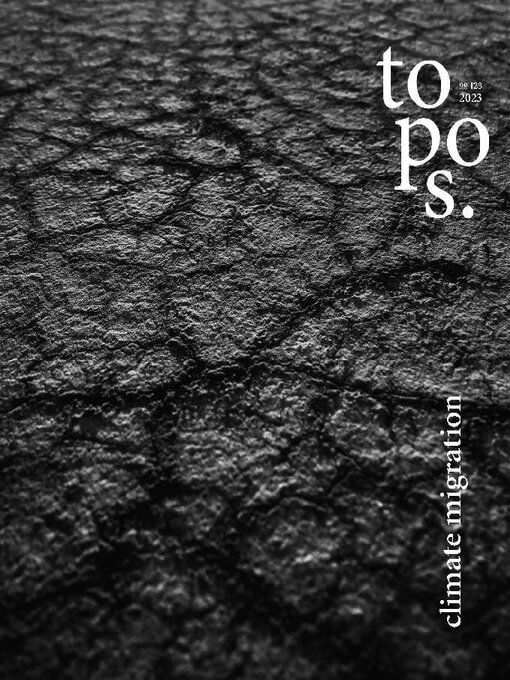Topos is a must-have for successful landscape architects, planners, urban designers and architects all over the world.The monothematic issues provide a global overview of innovative projects, new developments and trends in the profession. Be part of the worldwide community of Topos readers!
THE INTERNATIONAL REVIEW OF LANDSCAPE ARCHITECTURE AND URBAN DESIGN
EDITORIAL
“MUMBAI CAN SURVIVE THE STORM”
Relocating to Fiji • While the fight against climate change in the Maldives, Fiji or even Tuvalu receives comparatively much media attention, little is known about that of the island nation of Kiribati. Like Tuvalu, Kiribati was once part of the Gilbert and Ellic Islands colonized by the Commonwealth. Today, the island nation is particularly affected by the consequences of climate change. There the sea level rises by about half an inch every year. While there used to be extreme flooding events every three to four years, they now happen every three months, reports villager Beia Tim. She is afraid for her children and the future of all of Kiribati. Her worries are justified: According to World Bank calculations, the island nation could be largely uninhabitable by 2050 and flooded by 2070 at the latest. The inhabitants of Kiribati are most likely to lose their homes due to climate change. They will have to relocate. In 2014, the small island nation therefore bought 2,000 hectares of land in the volcanic mountains of Fiji to give its population a refuge from rising sea levels. 2,000 hectares of land for 119,438 inhabitants. According to former President Anote Tong, it is hoped that not all the inhabitants will have to be accommodated on the small piece of land.
Nusantara • Indonesia’s current capital, Jakarta, is slowly but surely sinking into the sea. The government is therefore embarking on a major project, moving the country’s capital from Java to Borneo in an attempt to escape rising sea levels. The name of the new Indonesian capital: Nusantara.
Internal Displacement Monitoring Centre
Climate Migration – a Myth? • Climate change is already having an impact on many lives: causing droughts, extreme weather events, rising sea levels. Consequences of climate change may drive people to migrate. At the same time, we seem to be just at the beginning in our knowledge and understanding of climate migration. About a lack of legal definitions and data, moving whole cities and migration to digital space.
UNHCR – GUARDIANS OF THE DISPLACED • Those who are fleeing need special protection. Whether people are fleeing war, hunger or climate change, they need special support. UNHCR acts as the guardian of those seeking refuge and is one of the most important international institutions when it comes to refugee protection.
THE RISKS” THE RISKS • Climate migration and climate displacement are visible all over the world. Climate-related disasters, both sudden and slow-onset, drive the movement of people. This challenge will only grow in the years to come. We speak to an expert from the International Organization for Migration to learn what climate migration means for cities and urban planners.
BIGGEST REFUGEE CAMPS
“GIVE US A CHANCE” • During the Rohingya genocide in 2017, within a few days, over 700,000 Rohingya fled from Rakhine State, Myanmar, to the Cox’s Bazar district in Bangladesh. Since then, they have been living in the world’s largest refugee camp. While a few are able to claw their way out of the camp, the vast majority remain in unemployment and without prospects. For this issue of topos, UNHCR and the people of Rohingya gave us a glimpse into their world, their daily lives, and their survival strategies.
“PLANNED RELOCATION ALSO COMES WITH HUMAN RIGHTS RISKS” • Today, more people are facing displacement due to climate change issues than ever before. Human Rights Watch is working with displaced...

 N. 132
N. 132
 N. 131
N. 131
 N. 130
N. 130
 N. 129
N. 129
 N. 128
N. 128
 N. 127
N. 127
 N. 126
N. 126
 N. 125
N. 125
 N. 124
N. 124
 N. 123
N. 123
 N. 122
N. 122
 N. 121
N. 121